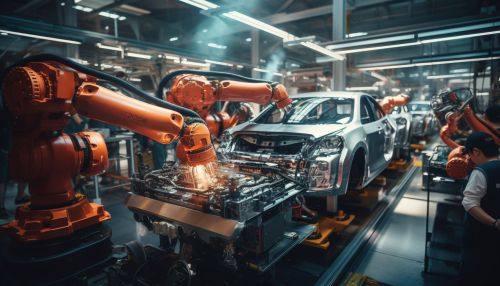Car manufacturing
History of Car Manufacturing
Car manufacturing, or automobile production, is the process of assembling automobiles, typically in a factory where various components are put together to form a complete vehicle. The history of car manufacturing dates back to the late 19th century, when the first horseless carriages were built.
In the early days, car manufacturing was a labor-intensive process, with each vehicle being built by hand. The introduction of the assembly line by Henry Ford in 1913 revolutionized the car manufacturing process, allowing for mass production of vehicles and making cars more affordable for the average consumer.
Components of a Car
A typical car is made up of several key components, each of which is manufactured separately before being assembled into the final product. These components include the engine, transmission, suspension, brakes, and body.
The engine is the heart of the car, providing the power needed to move the vehicle. It is typically made up of several smaller parts, including the cylinders, pistons, and crankshaft.
The transmission is responsible for transferring the power from the engine to the wheels. It includes components such as the gearbox, clutch, and driveshaft.
The suspension system helps to provide a smooth ride by absorbing shocks and vibrations from the road. It includes parts such as the springs, shock absorbers, and control arms.
The brakes are crucial for safety, allowing the driver to slow down or stop the vehicle. They consist of components such as the brake pads, rotors, and calipers.
The body of the car is the outer shell that houses all the other components. It is typically made from steel or aluminum, although some high-end cars use materials like carbon fiber for added strength and weight reduction.


Car Manufacturing Process
The car manufacturing process begins with the design and development of a new vehicle. This involves a team of engineers and designers who work together to create a vehicle that is both functional and aesthetically pleasing.
Once the design is finalized, the manufacturing process begins. This typically involves several stages, including:
1. Stamping: This is the process of shaping flat sheets of metal into the required shapes for the car's body panels. The metal sheets are placed into a stamping press, which uses a die to cut and shape the metal.
2. Welding: The stamped metal parts are then welded together to form the car's body. This is typically done by robots in a process known as spot welding.
3. Painting: The car's body is then painted to protect it from rust and to give it its final color. This is done in a paint shop, where the body is first cleaned and then sprayed with several layers of paint.
4. Assembly: The painted body is then moved to the assembly line, where the various components of the car are installed. This includes the engine, transmission, suspension, brakes, and interior fittings.
5. Quality Control: The final stage of the manufacturing process is quality control, where each car is inspected to ensure it meets the manufacturer's standards. This can involve both visual inspections and mechanical tests.
Modern Trends in Car Manufacturing
In recent years, there have been several key trends in car manufacturing. These include the increasing use of automation and robotics, the shift towards electric vehicles, and the development of self-driving cars.
Automation and robotics are becoming increasingly prevalent in car manufacturing, with robots being used for tasks such as welding, painting, and assembly. This can help to increase efficiency and reduce the risk of human error.
The shift towards electric vehicles (EVs) is also having a significant impact on car manufacturing. EVs require different components and manufacturing processes compared to traditional gasoline-powered cars, leading to changes in the way cars are built.
The development of self-driving cars is another major trend. These vehicles require advanced sensors and software, adding complexity to the manufacturing process.
